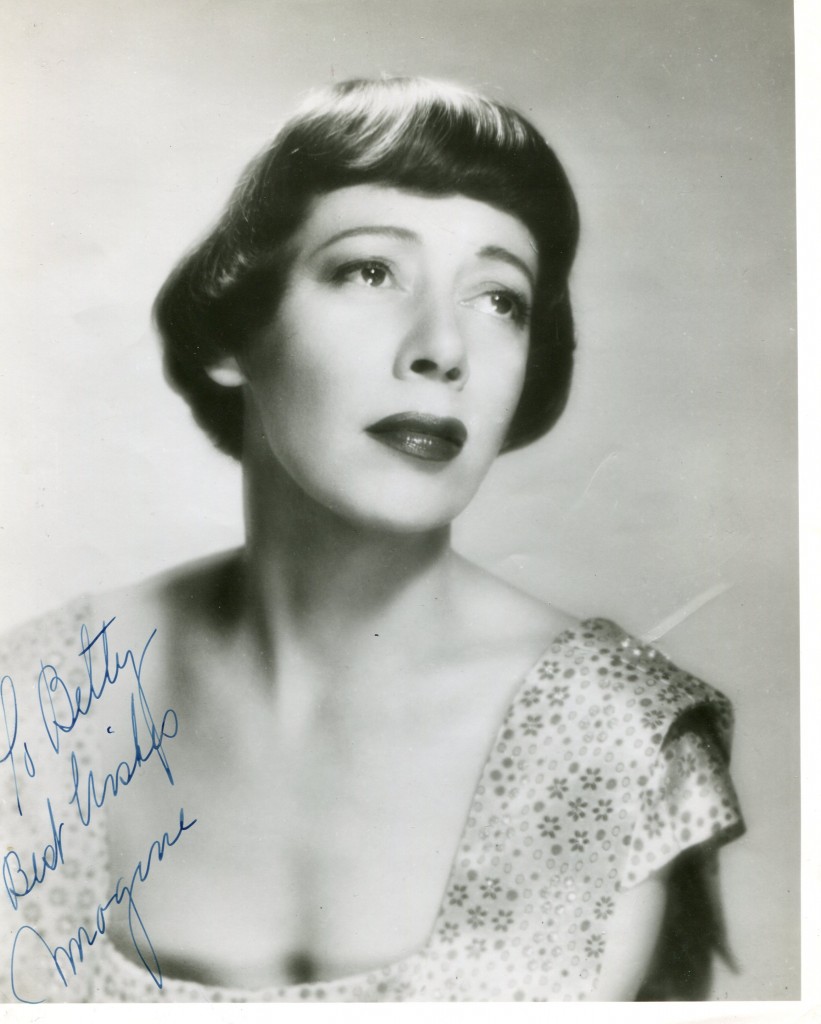
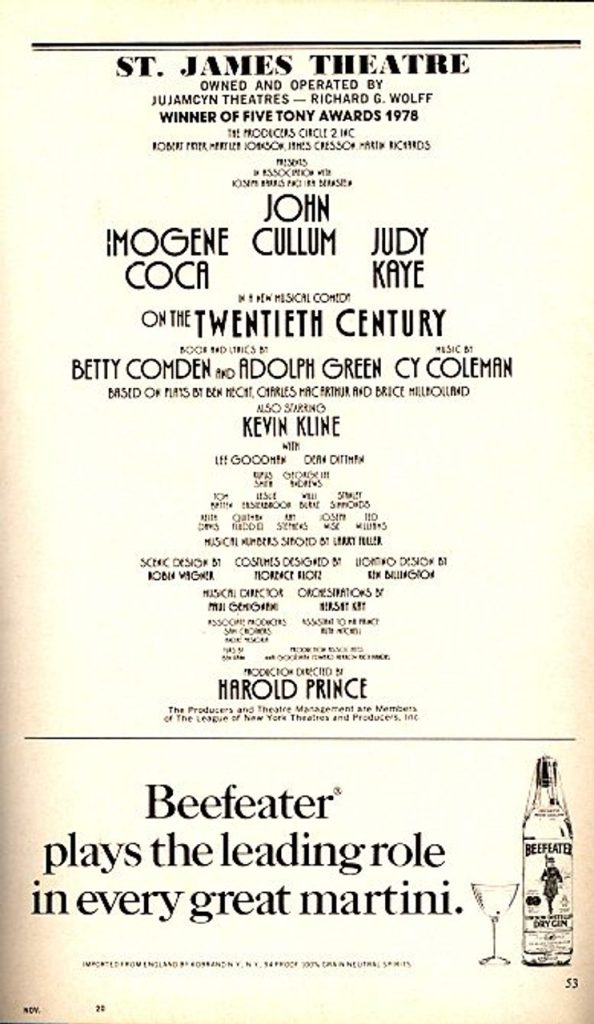
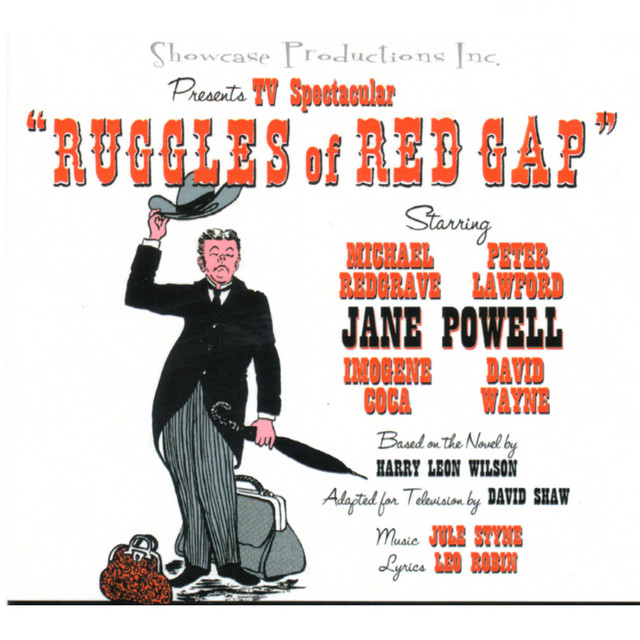
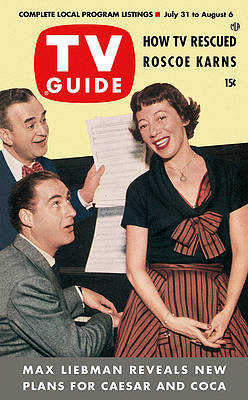
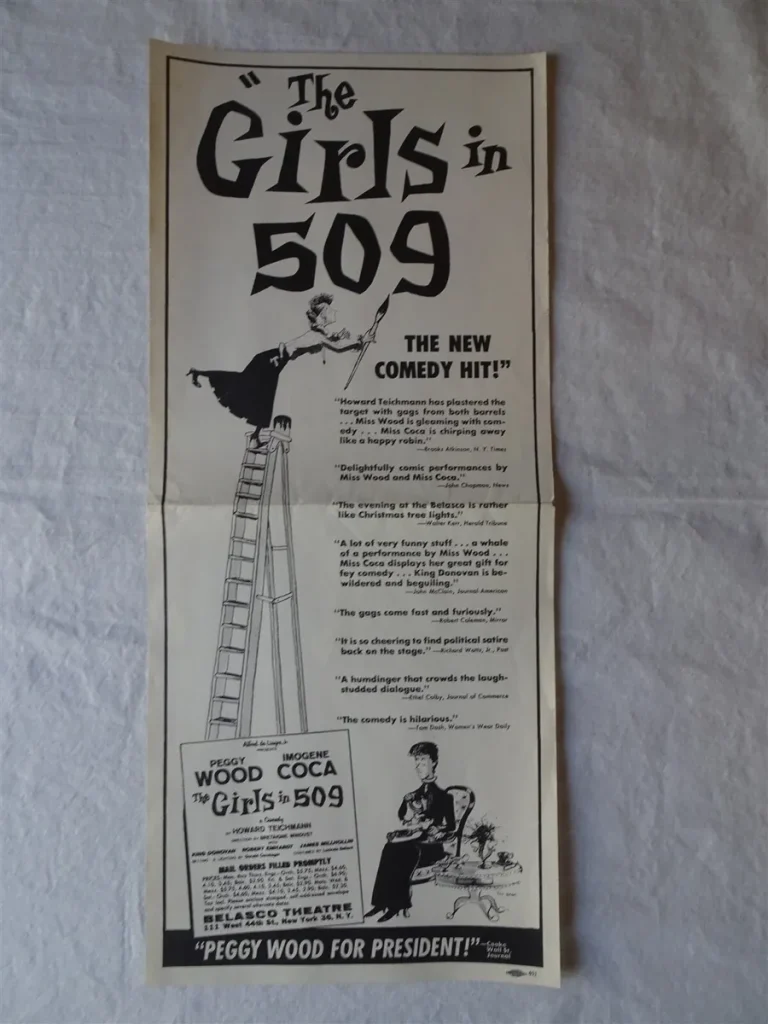
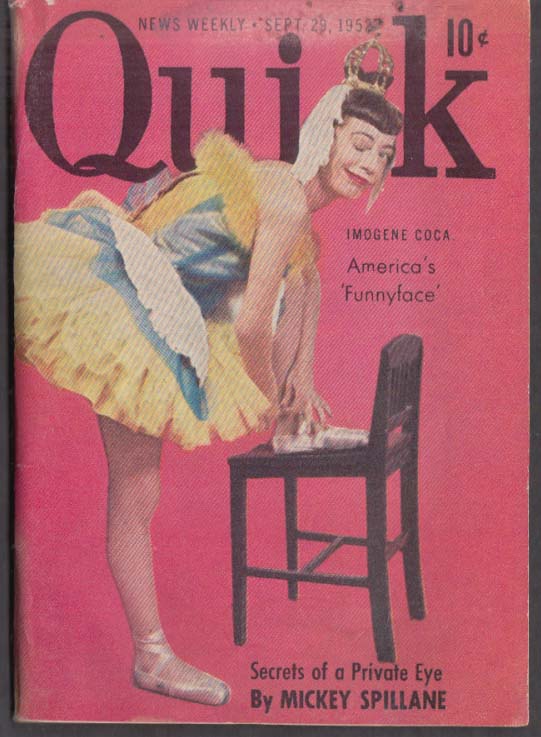
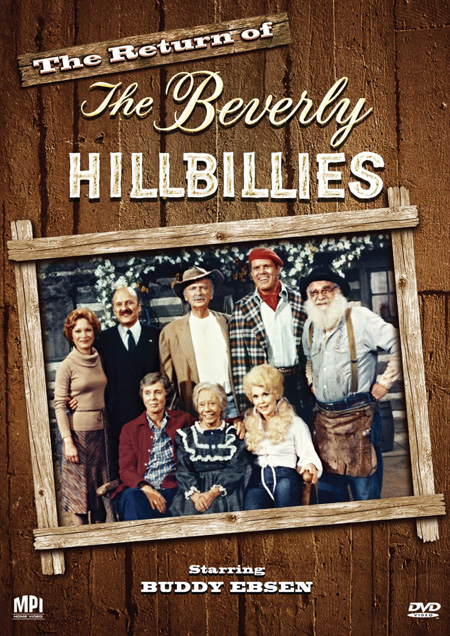
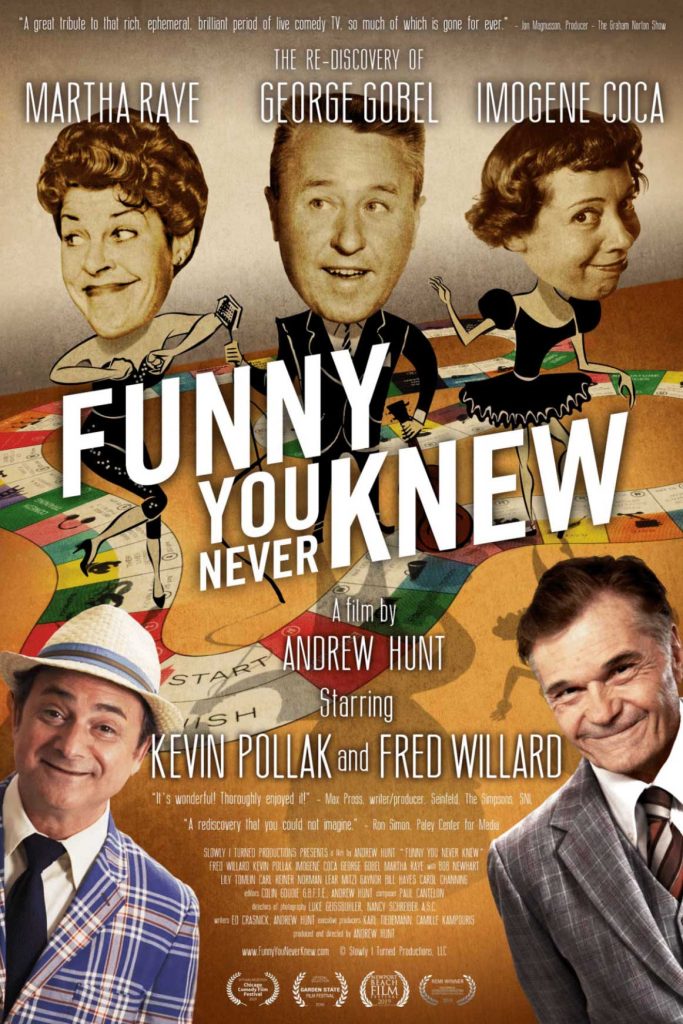
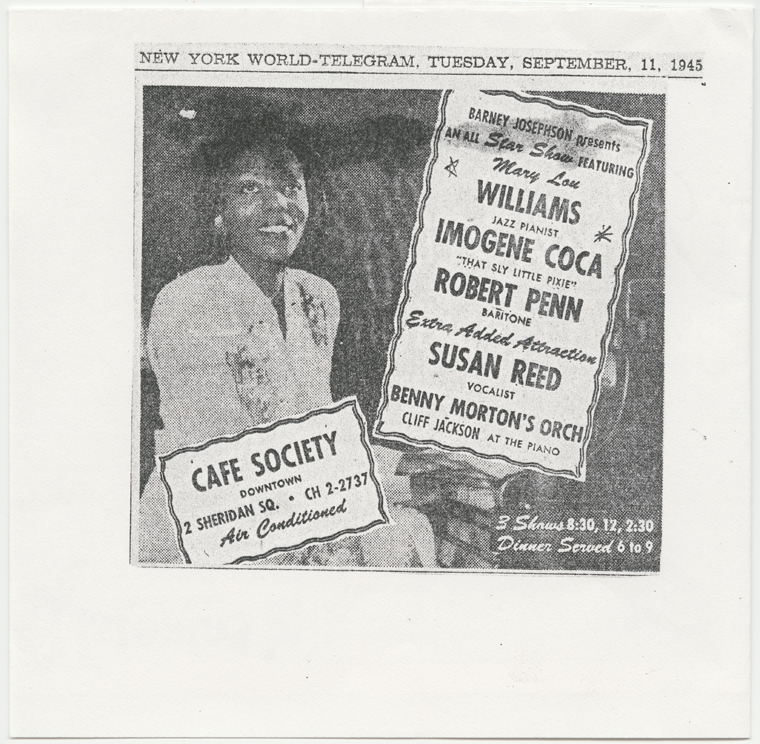
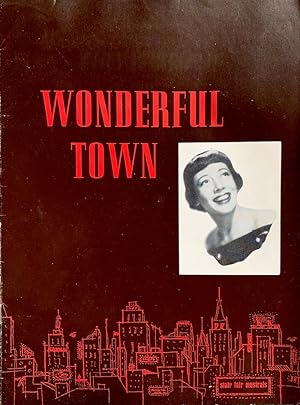
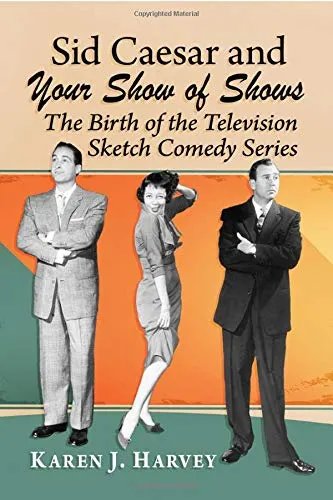
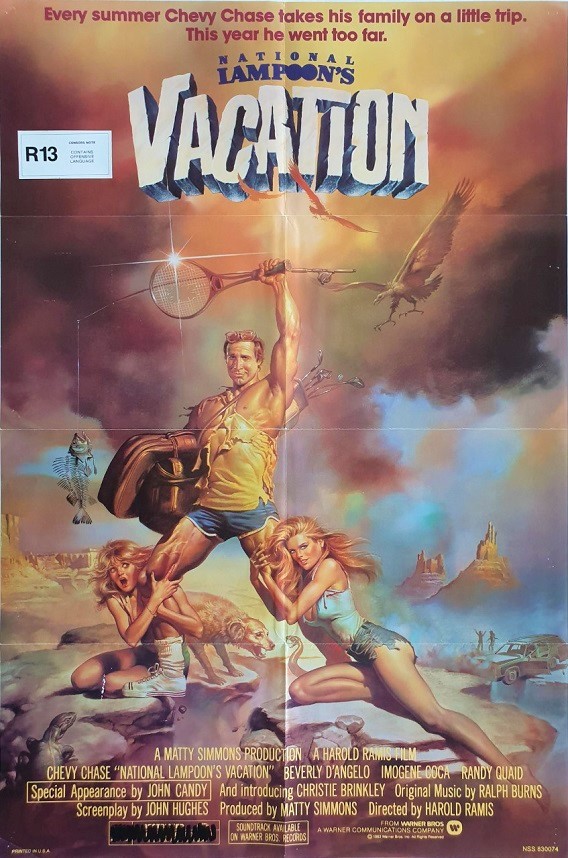
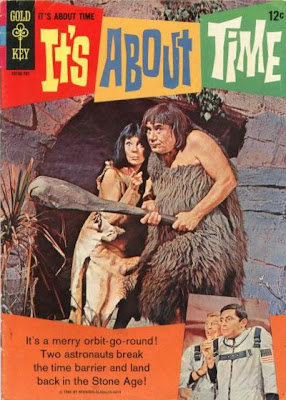
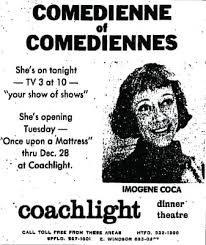


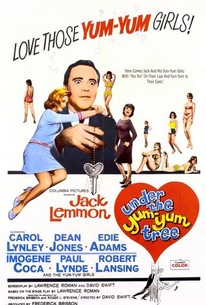
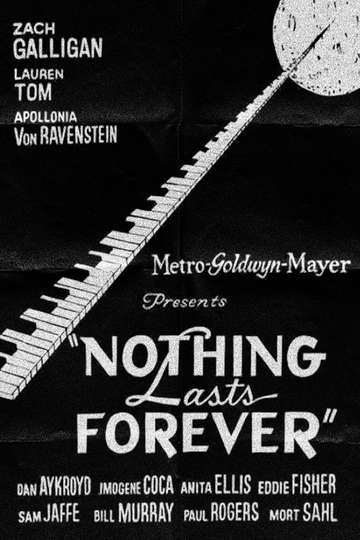
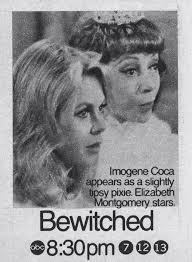
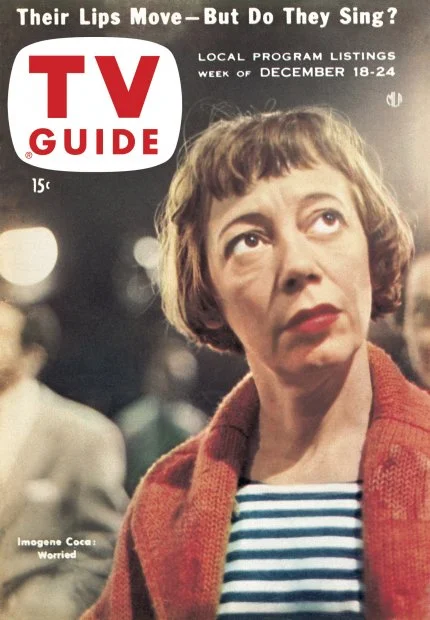
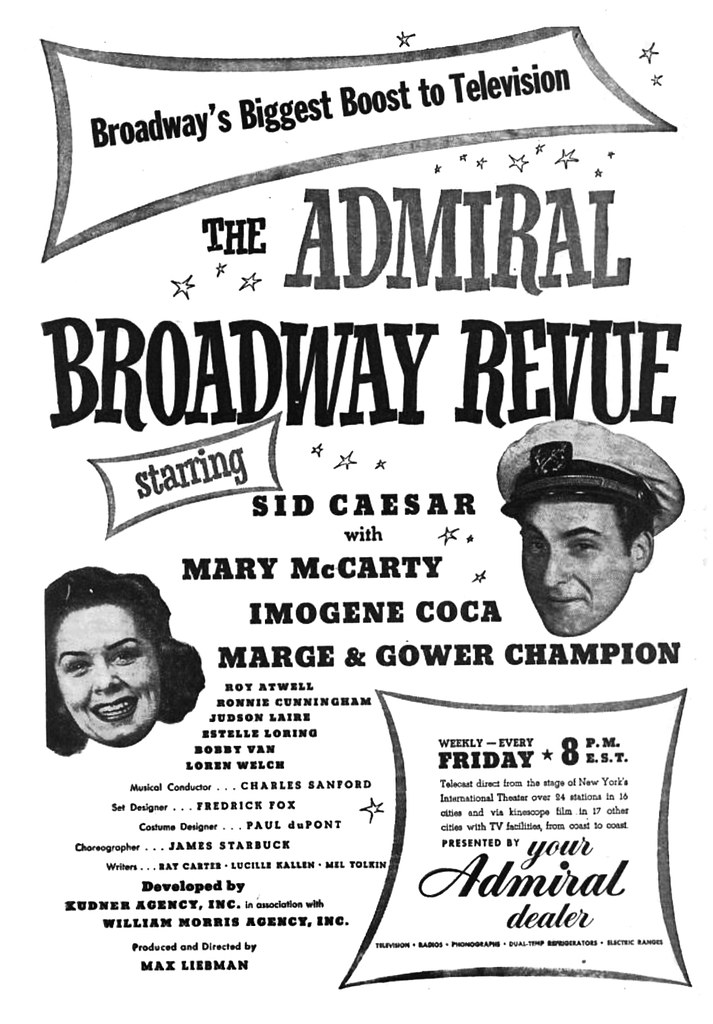
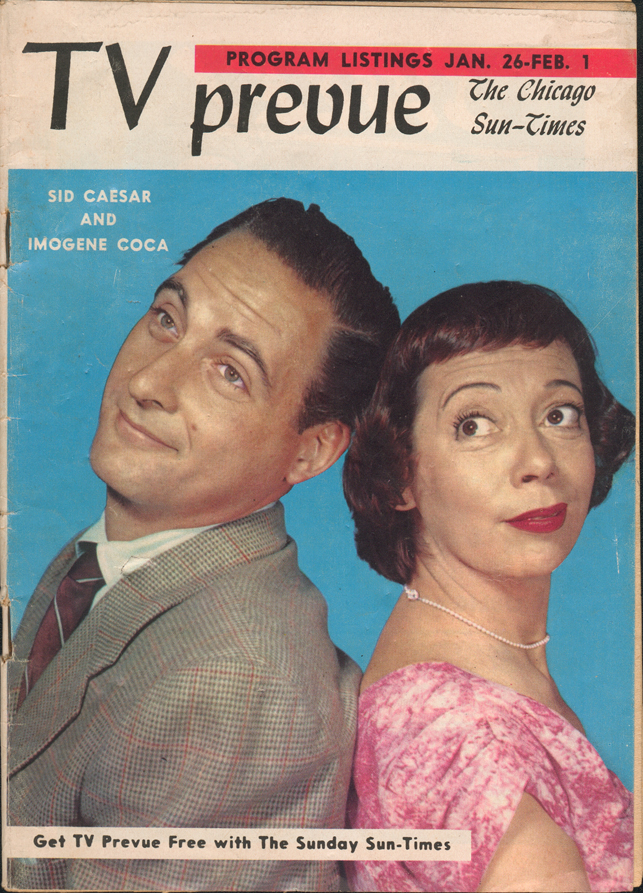
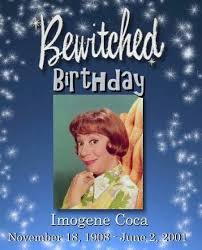
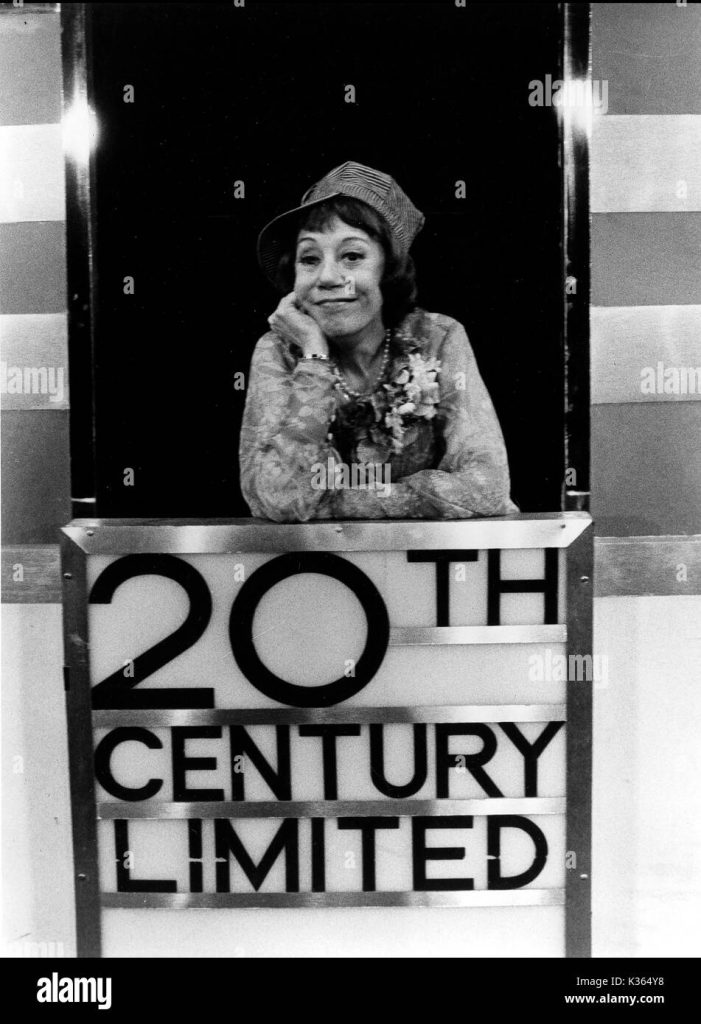
Imogene Coca was born in 1908 in Philadelphia. She is maninly known for her television performances especially “Your Show of Shows” in the early 1950’s. In 1963 she starred in the series “Grindl”. On film she was terrific in “National Lampoon Vacation” in 1983. Imogene Coca died in 2001 at the age of 92. She was married to the actor King Donovan.
“Independent” obituary:
Zany, saucer-eyed and elastic-faced, Imogene Coca was a diminutive comedienne and actress whose performances with Sid Caesar in the television series Your Show of Shows in the early Fifties have become the stuff of legend. Coca could satirise anyone, from housewife to society matron, movie star to opera diva or ballerina, and her clowning was an acknowledged inspiration for many that followed. Both Carol Burnett and Lily Tomlin have said that Coca was a strong influence on their work, Tomlin remarking some years ago, “I was so attracted to her comic striptease routine that I copied it stole it! when I was in college.”
Though she had success in night-clubs, movies and on Broadway, Coca will always be remembered for Your Show of Shows, which for over four years from 1950 dominated Saturday nights on American television. Blessed with a gifted team of writers including Mel Brooks, Neil Simon and Woody Allen, it is considered one of the classics of television’s “Golden Age”. Coca was steeped in show business from the moment she was born, but her climb to stardom was a long one. Her parents were José Fernandez Coca, a violinist and vaudeville bandleader, and Sadie Brady, a dancer who also performed in a magician’s act. An only child, she spent her childhood either in the theatres where her parents worked or in the tumultuous Philadelphia theatrical boarding house where they lived between engagements. She began piano lessons at the age of five, singing lessons at six and dancing lessons at seven. “I began on the stage as one of those horrible little children who sing with no voice,” she later recalled. She attended school in Atlantic City for a while, but by the age of 11 was performing in vaudeville doing tap, acrobatic and ballet dancing.
At 13 she was singing in a slinky black dress at a Pennsylvania night-club, and at 15 left Philadelphia for New York, where she danced in Jimmy Durante’s Silver City Club. She made her Broadway début as a chorus girl in the musical When You Smile(1925), which lasted for only 49 performances, and for the next nine years she played in virtually every form of show business musicals, revues, night-clubs and summer stock working mainly as a dancer. “I never thought of myself in comedy at all,” she said: I loved going to the theatre and seeing people wearing beautiful clothes come down the staircase and start to dance. I also wanted to play St Joan. On Broadway her winsome charm was displayed in such revues asGarrick Gaieties (1930), Shoot the Works (1931) and Flying Colors(1932). Her transition to comedy and pantomime came by accident when she was rehearsing in a cold theatre for New Faces of 1934. Lent an enormous coat to keep warm she began clowning around. She later recalled,
Along with three boys in the chorus, I was jumping up and down to keep warm. Then we found ourselves doing silly little steps when producer Leonard Stillman came in. He asked what we were doing, then said, “It looks funny; I’ll put it in the show.” We thought that was crazy, but it turned out to be a big hit. Stillman had her perform almost the entire show in the top-coat as a running gag, at one point having her saunter across the stage in it, carrying a small feather and announcing that she was doing her fan dance. Although Henry Fonda was another of the new talents in the show it had only a modest run, but Coca was hailed as a bright new comedy find and Stillman used her again in New Faces of 1936, in which she reprised her coat routine and also played a Cinderella who begs her fairy godmother to let her be a stripper. In the Thirties the summer camps where families vacationed in the mountain regions of the Catskills and Poconos were great training grounds for performers, and for several summers Coca worked on her comedy at such camps, where others developing their skills included Danny Kaye, Jerome Robbins, Carol Channing and the producer Max Leibman. When Leibman took some of the material that had been tried out at the camps and packaged it on Broadway as The Straw Hat Revue (1939), Kaye, Coca and Robbins were in the cast, with Coca stopping the show with a parody of Carmen Miranda, “Soused American Way”.
Though she had acquired a small following, her career proceeded in what she later termed “fits and starts” until Leibman, who had worked with both Coca and Sid Caesar in the Catskills, paired them in a television variety series, Admiral Broadway Revue(1949). Telecast live from a theatre in New York, it was a spectacular production with the dancers Marge and Gower Champion among its regulars plus top-name guests every week. Each show would have half a dozen comedy skits the opening programme concluded with a burlesque on opera, No No Rigoletto, in the style of the revue producer Billy Rose. The series lasted only six months, but Caesar and Coca returned the following year for Your Show of Shows, a similarly ambitious 90-minute weekly variety series which had a large corps of singers and dancers but was dominated by the comic genius of Caesar and Coca. They appeared in regular routines such as “History the Way She Ain’t” and as a hilariously mismatched married couple, “The Hickenloopers”, and satirised current films and television shows such as Shane (with Caesar a fearless gunfighter called “Strange”) and one of their best-remembered sketches, “From Here to Obscurity”, which concluded with the couple alone on a beach in their swimsuits, trying to make love as buckets of water splash into their faces. Finally he says, “There’s one thing I have to ask.” “Yes?” “Did you bring a towel?”
Coca’s musical training was an asset in her parodies of opera divas and prima ballerinas, such as her interpretation of a fiercely intense young Wagnerian. The mezzo-soprano Rise Stevens said, “You’re always deathly afraid the young singer will never make the last note. With Imogene, you’re always afraid she will.” Her dance spoofs, such as her pursuit of a prancing satyr inAfternoon of a Faun, were based on finely exaggerated professional movements rather than ungainly posturing. Her gifts for pantomime were extraordinary, and her face remarkably supple. In one sketch, she was a wife posing for her amateur photographer husband (Caesar) who could not quite satisfy himself about her expression. Poking and pushing, he kept rearranging her features, which froze where he put them. Finally he had her with one eye shut tight as the other followed him around the room like a searchlight.
Coca later said that she and Caesar never saw each other socially, but performed with exactly the same rhythm when the camera was on: Two people couldn’t be less alike than Sid and myself. But we kind of know what the other one’s going to do. We pick up each other’s vibes, and we find the same things funny. In 1951 they both won Emmy Awards as the best actor and actress on television. Carl Reiner and Howard Morris later joined the show and became important members of the comedy team, performing with Caesar and Coca a routine in which the four are mechanical figures on a Bavarian clock who go increasingly haywire as each hour strikes. The show ended in 1954 with a tearful recap of the best sketches from the previous four years, and even the president of NBC turned up to thank everyone and wish them well.
Neither Caesar nor Coca ever quite recaptured that magic, either separately or together. Coca was given her own television series, which lasted only one season, but in 1956 she successfully took over from Claudette Colbert in the Broadway comedy Janus. In 1958 she accompanied Caesar to England to do a series of playlets for the BBC, and she starred in touring versions of several musicals including Wonderful Town, Once Upon a Mattress andBells are Ringing. In 1967 The Sid Caesar, Imogene Coca, Carl Reiner and Howard Morris Special reunited the former team and won an Emmy as outstanding variety special.
Coca’s first film was Bashful Ballerina (1937) and later films included Under the Yum Yum Tree (1963), in which she was a nosy housekeeper to a lecherous landlord, Jack Lemmon, and National Lampoon’s Vacation (1983), as Aunt Edna. In 1978 she won a Tony nomination for her portrayal of a religious fanatic in the Broadway musical On the Twentieth Century,Tom Vallance a part that had been turned down by Mildred Natwick because it was “too risqué“.
A shy person offstage, Coca was an animal lover who once, while on holiday in California, bought a crippled duck and brought it back to live on her penthouse terrace in Manhattan. In 1935 she married Robert Burton, who arranged music for many of her sketches. He died in 1955 and five years later Coca married the actor King Donovan, with whom she appeared in in such plays asThe Fourposter and The Prisoner of Second Avenue. He died in 1987.
In 1991 Coca and Caesar recreated some old sketches in a stage show, Together Again, which they took across the United States to a warm response. Coca said:
Married people still have silly arguments, Hollywood still turns out silly movies, ballet dancers still do silly things on stage. So in some ways not much has changed.
Tom Vallance
The above “Independent” obituary can also be accessed online here.

